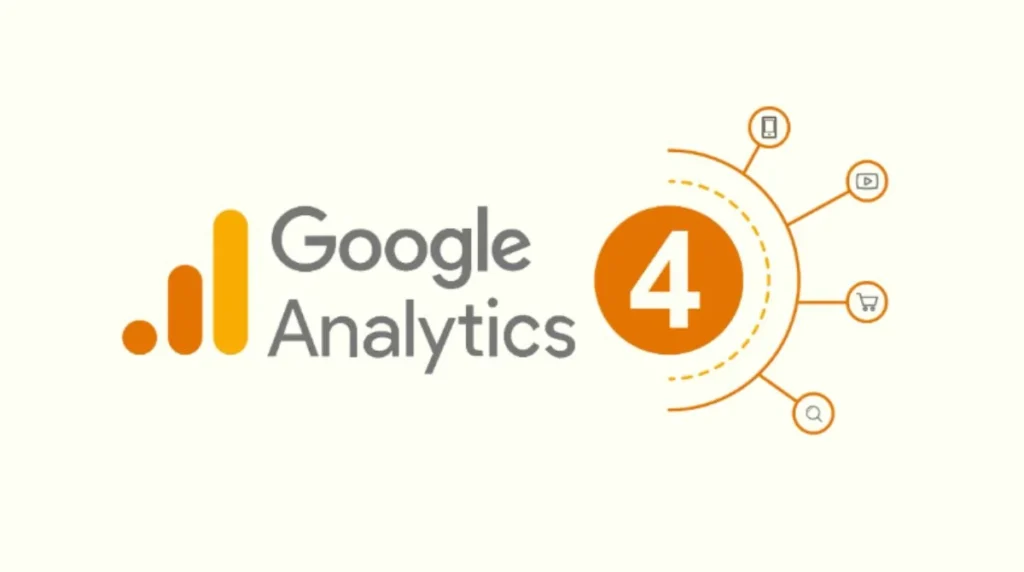What Is Google Analytics 4?
Google Analytics 4 is a free analytics tool that tracks and reports website traffic. Unlike its predecessor, GA4 focuses on events rather than page views. This means it captures every interaction users have with your website, from clicks to video plays.
GA4 was designed to handle the modern digital landscape where users interact with businesses across multiple devices and platforms. It provides a unified view of your customer journey from their first website visit to their final purchase.
Key Features of Google Analytics 4
Event-Based Tracking
GA4 collects event-based data from both websites and apps to better understand the customer journey. Every user interaction becomes an event, giving you detailed insights into user behavior.
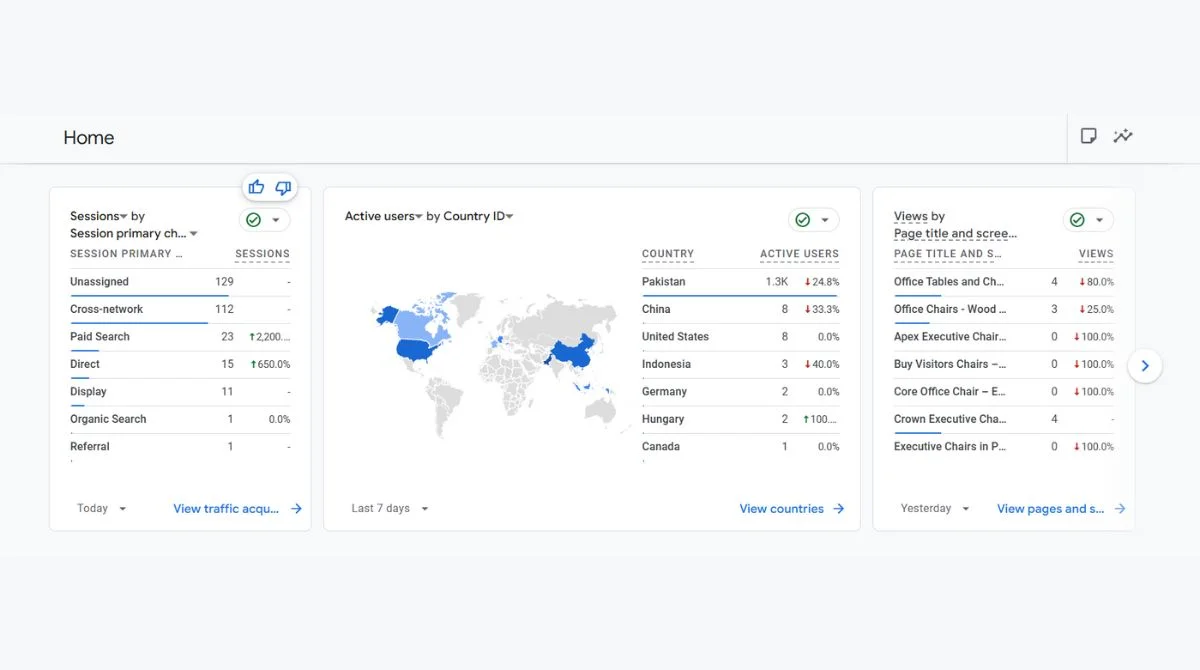
Cross-Platform Measurement
GA4 tracks users across websites, mobile apps, and other digital platforms. This unified approach helps you see the complete customer journey across all touchpoints.
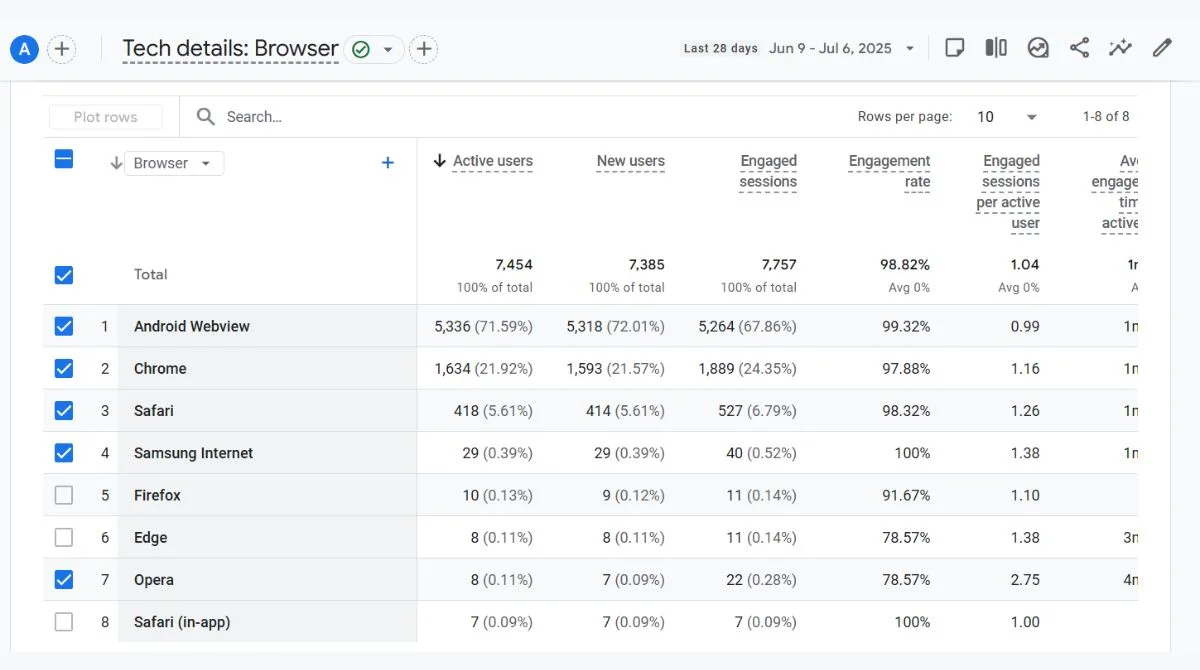
Enhanced AI and Machine Learning
The latest updates introduce AI-powered tools including enhanced anomaly detection, improved event tracking, and extended data retention options. These features help you spot trends and unusual patterns in your data automatically.
Privacy-First Design
GA4 was built with privacy in mind. It works without cookies when needed and helps you comply with privacy regulations like GDPR and CCPA.
How Google Analytics 4 Works?
Data Collection Process
GA4 starts collecting data as soon as you install the tracking code on your website. The system automatically captures basic events like page views, clicks, and scrolls without any additional setup.
Event Types in GA4
GA4 organizes events into four main categories:
- Automatically Collected Events: These include page views, first visits, and session starts. GA4 captures these without any configuration needed.
- Enhanced Measurement Events: These track file downloads, outbound clicks, site searches, and video engagement. You can enable these with a simple toggle.
- Recommended Events: These are events Google suggests for specific business types, like purchases for e-commerce sites or sign-ups for lead generation.
- Custom Events: These are events you create to track specific actions important to your business goals.
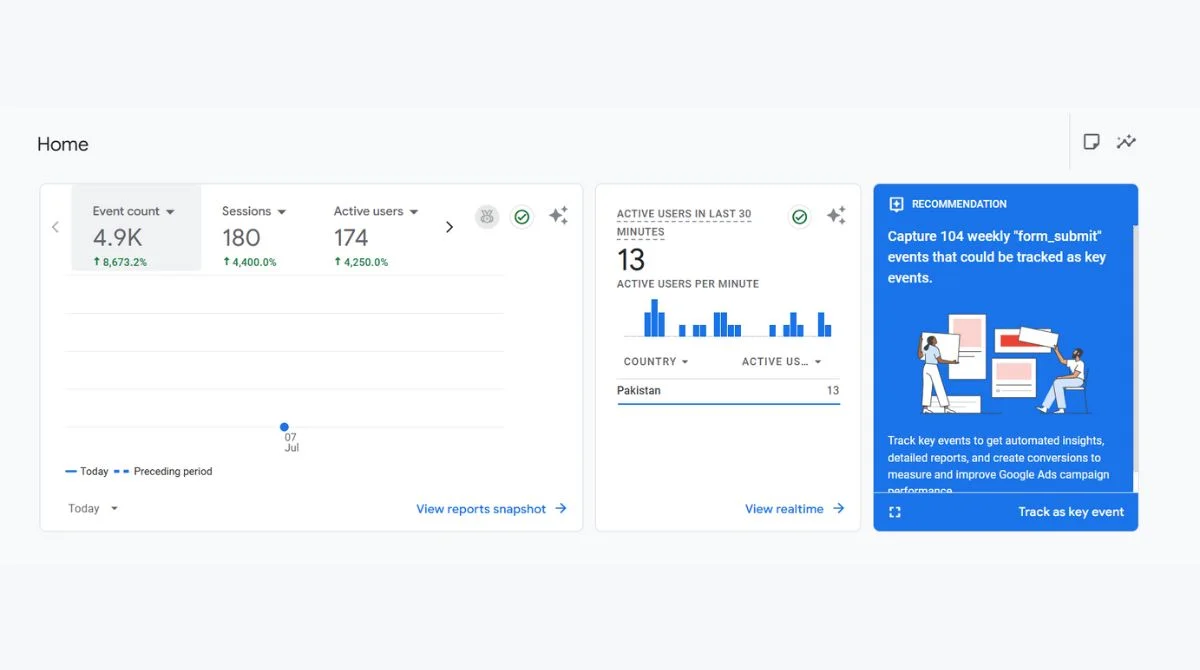
Data Processing and Reporting
Once GA4 collects your data, it processes the information and creates reports. The platform uses machine learning to fill in data gaps and provide insights you might miss.
Benefits of Using Google Analytics 4
Better User Understanding
GA4 provides deeper insights into user behavior patterns. You can see how users interact with your content and identify what drives conversions.
Improved Conversion Tracking
The platform makes it easier to track conversions across different devices and platforms. You can set up multiple conversion events and see which marketing channels drive results.
Advanced Analysis Tools
Recent updates include the Compare feature, Export to Google Sheets, and Export to Explore, making data analysis more flexible and accessible.
Future-Proof Analytics
GA4 is designed to adapt to changing privacy regulations and cookie restrictions. It ensures your analytics continue working as the digital landscape evolves.
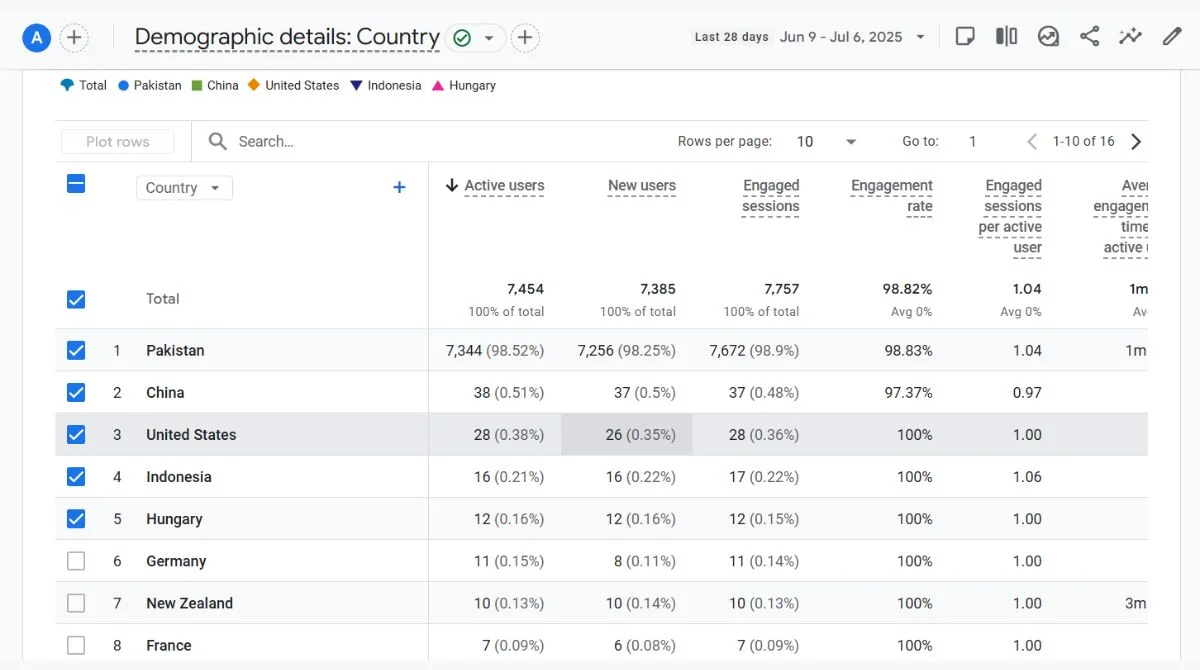
Setting Up Google Analytics 4
Creating Your GA4 Property
Start by creating a new GA4 property in your Google Analytics account. You’ll need to provide basic information about your website and business.
Installing the Tracking Code
Add the GA4 tracking code to your website. You can do this directly through your website’s HTML or using Google Tag Manager for easier management.
Configuring Basic Settings
Set up your time zone, currency, and basic goals. These settings help GA4 provide accurate and relevant data for your business.
Setting Up Conversion Events
Identify the key actions you want users to take on your website. Configure these as conversion events in GA4 to track your marketing success.
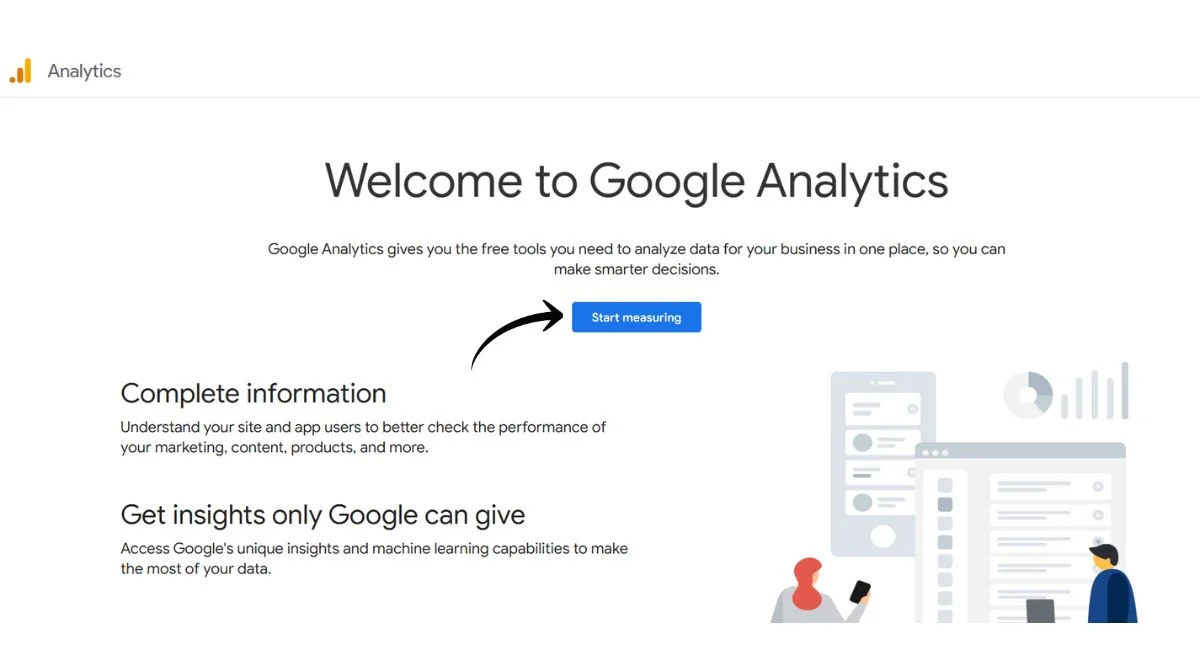
Common GA4 Reports and Their Uses
Acquisition Reports
These reports show how users find your website. You can see which marketing channels drive the most traffic and conversions.
Engagement Reports
These help you understand how users interact with your content. You can identify popular pages and see how long users stay engaged.
Monetization Reports
For e-commerce sites, these reports show revenue data, popular products, and purchase behavior patterns.
Retention Reports
These reports help you understand how often users return to your website and what keeps them engaged over time.
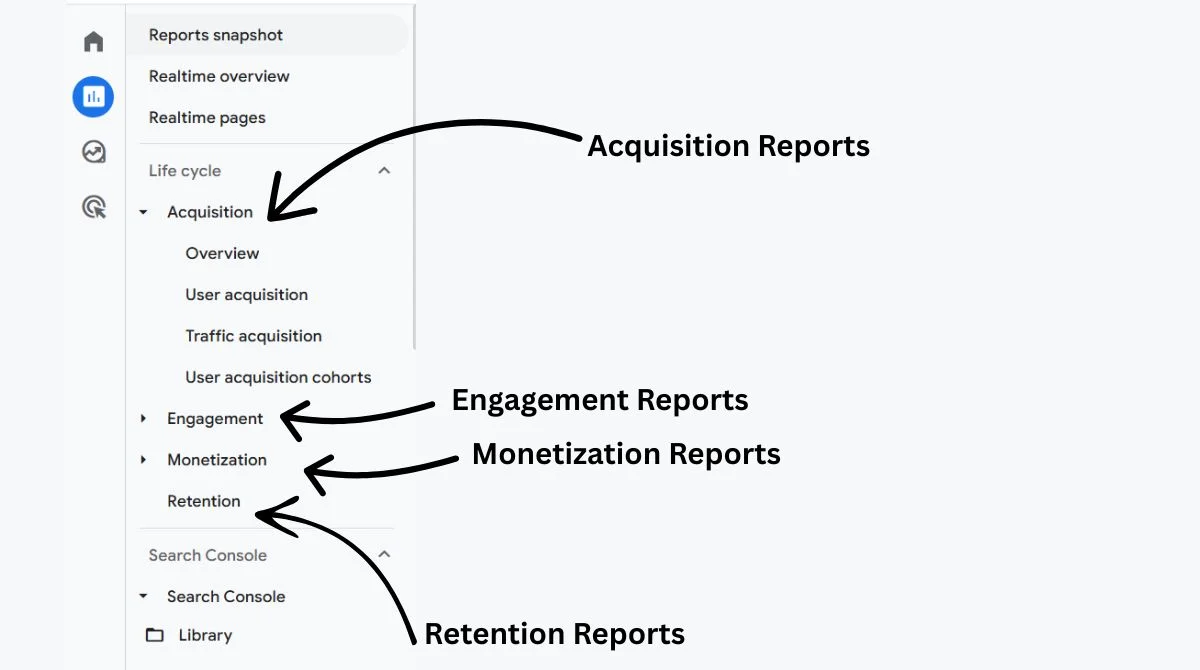
GA4 vs Universal Analytics
Key Differences
GA4 focuses on events while Universal Analytics centered on page views. GA4 also provides better cross-platform tracking and privacy features.
Migration Considerations
Since Universal Analytics stopped collecting data in July 2023, migrating to GA4 is essential. The sooner you start, the more historical data you’ll have for comparison.
Tips for Getting Started with GA4
Start with Default Settings
Begin with GA4’s default configuration to understand how it works. You can customize settings later as you become more familiar with the platform.
Focus on Key Metrics
Don’t try to track everything at once. Start with the most important metrics for your business goals and expand gradually.
Use Google Tag Manager
This tool makes it easier to manage your GA4 tracking code and add new events without changing your website’s code.
Regular Data Review
Check your GA4 reports regularly to spot trends and opportunities. Set up automated reports to stay informed about your website’s performance.
Common GA4 Challenges and Solutions
Learning Curve
GA4 works differently from Universal Analytics, so expect a learning period. Take time to explore the interface and understand the new terminology.
Data Differences
You might notice differences between GA4 and Universal Analytics data. This is normal due to different tracking methods and privacy features.
Custom Event Setup
Setting up custom events requires technical knowledge. Consider working with a professional if you need complex tracking setups.
Getting Professional Help
If you’re finding GA4 overwhelming or need an advanced setup, consider getting professional help. Rhinoclicks offers comprehensive Google Analytics 4 services to help you implement and optimize your tracking setup. Their experts can configure custom events, set up conversion tracking, and create custom reports tailored to your business needs.
Conclusion
Google Analytics 4 is essential for modern website tracking with its event-based approach and cross-platform capabilities. While it has a learning curve, the insights it provides are crucial for understanding your audience and improving your marketing efforts. Start with a basic setup and gradually expand your tracking as you become more comfortable with the platform. Focus on your key business goals first for the best results.
Related Topic: How Do Search Console Tools Improve Website Performance?


